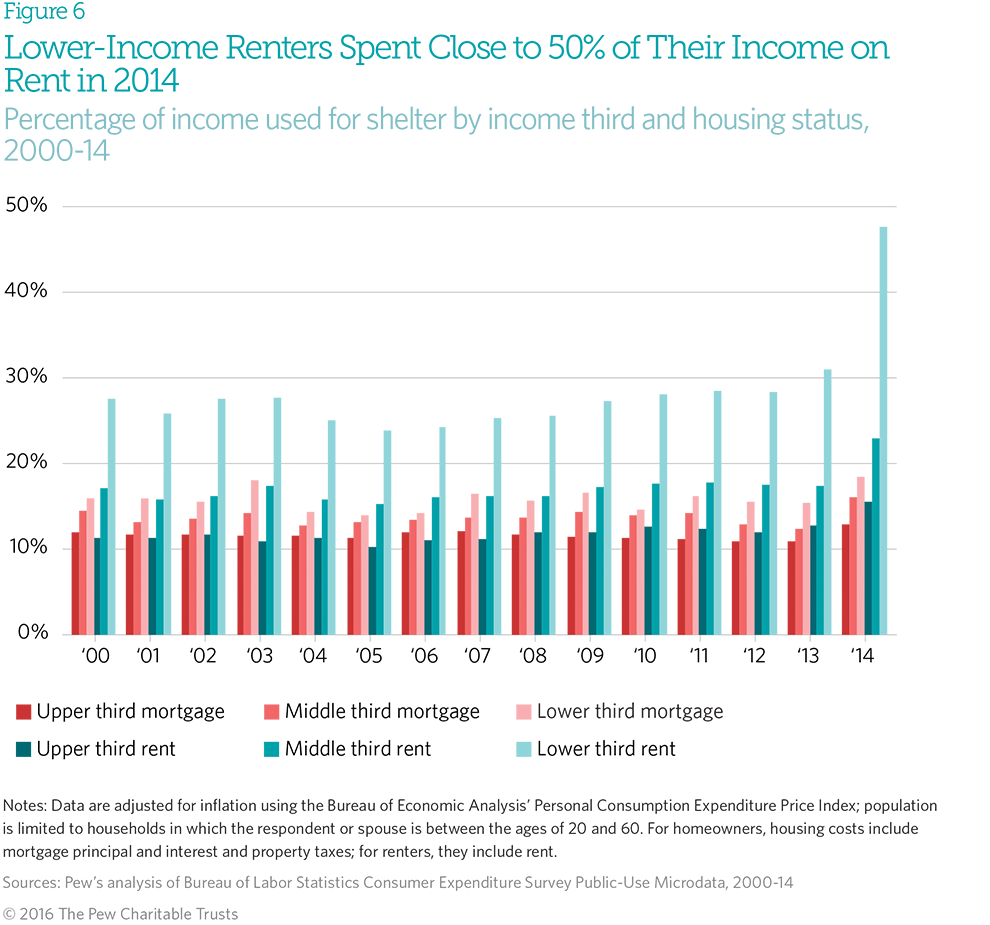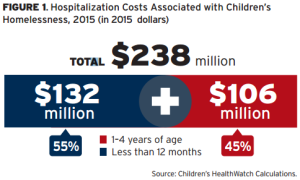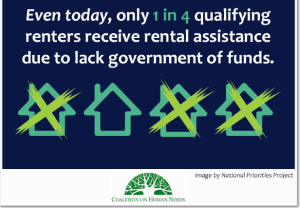Fact of the Week: Lower-Income Renters Spend Nearly Half of Income on Rent
Housing costs traditionally eat up a large portion of most Americans’ budgets. But for lower-income renters, rising housing costs mean even less money is left over to cover everything else. According to new research from the Pew Charitable Trusts, renters in the bottom third of the income spectrum spent close to 50 percent of their income on rent. Low-income households overall (including homeowners) spent more than 40 percent on housing, far more than households in the middle third (25 percent) or the top (17 percent).
Renters at all rungs of the income ladder spent a higher percentage of their income on housing in 2014 than they had since 2004, but the increase wasn’t even across income levels. Pew notes housing costs for lower-income households grew by more than 50 percent between 1996 and 2014, much more than for Americans in the middle and top tiers.
With costs skyrocketing like this for those who can least afford it, many low-income Americans – including children – are left homeless. We know how detrimental homelessness can be for children, from lower educational attainment (and therefore lower incomes throughout adulthood) to increased medical costs. Previous research has also shown that children suffer negative health outcomes whether the mother is homeless before or after the child is born.
Now, a new policy report from Children’s HealthWatch and the National Housing Conference shows public investment in housing – including housing for homeless families and rental assistance for food-insecure families – improves the health outcomes of vulnerable infants and young children and lowers health care spending.
The report estimated the total annual cost of hospitalizations of children under five attributable to homelessness was over $283 million in 2015. However, the report also found that rental assistance can make a big impact. Infants in food-insecure families who received rental assistance during the pre-natal period, for example, were 43 percent less likely to have been hospitalized compared to infants in similar families who didn’t receive rental assistance. The availability of rental assistance to these families meant 1,200 infant hospitalizations were prevented and an estimated $20 million in hospital costs was saved in 2015. In short, ensuring children and families have a safe, stable and affordable place to live can lead to reduced health care costs, and the money saved from reduced medical costs could be put towards expanding housing assistance to help even more families.
This is just one example of how investments in human needs programs today can pay off tomorrow and lead to a better country for us all in the long run. And these investments are critically needed. Most low-income programs have suffered years of cuts and have lost ground since 2010. Today, fewer than one in four households who qualify for federal housing assistance receives it due to lack of funds.
As we continue through another federal budget and appropriations season, we’ll be paying close attention to programs that serve low-income Americans and the funding they are given by our elected officials. As they talk about building a better tomorrow for our children while also being responsible with taxpayer money, we’ll be watching to see if they use our money to support programs – like housing assistance – that do both.
This post was originally published on the Coalition on Human Needs' blog, Voices for Human Needs. Receive similar articles in your inbox by subscribing today, and follow CHN on Facebook and Twitter.






The views and opinions expressed in this post are those of the author(s) and do not necessarily reflect those of MomsRising.org.
MomsRising.org strongly encourages our readers to post comments in response to blog posts. We value diversity of opinions and perspectives. Our goals for this space are to be educational, thought-provoking, and respectful. So we actively moderate comments and we reserve the right to edit or remove comments that undermine these goals. Thanks!